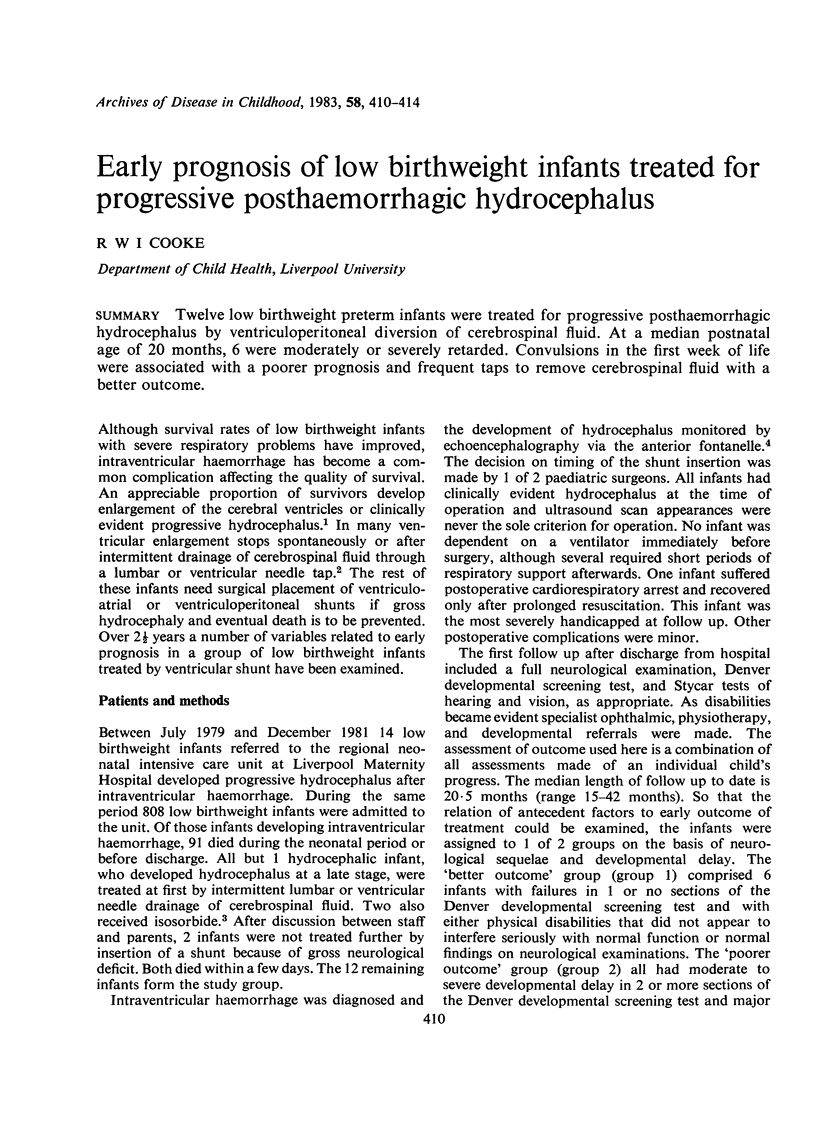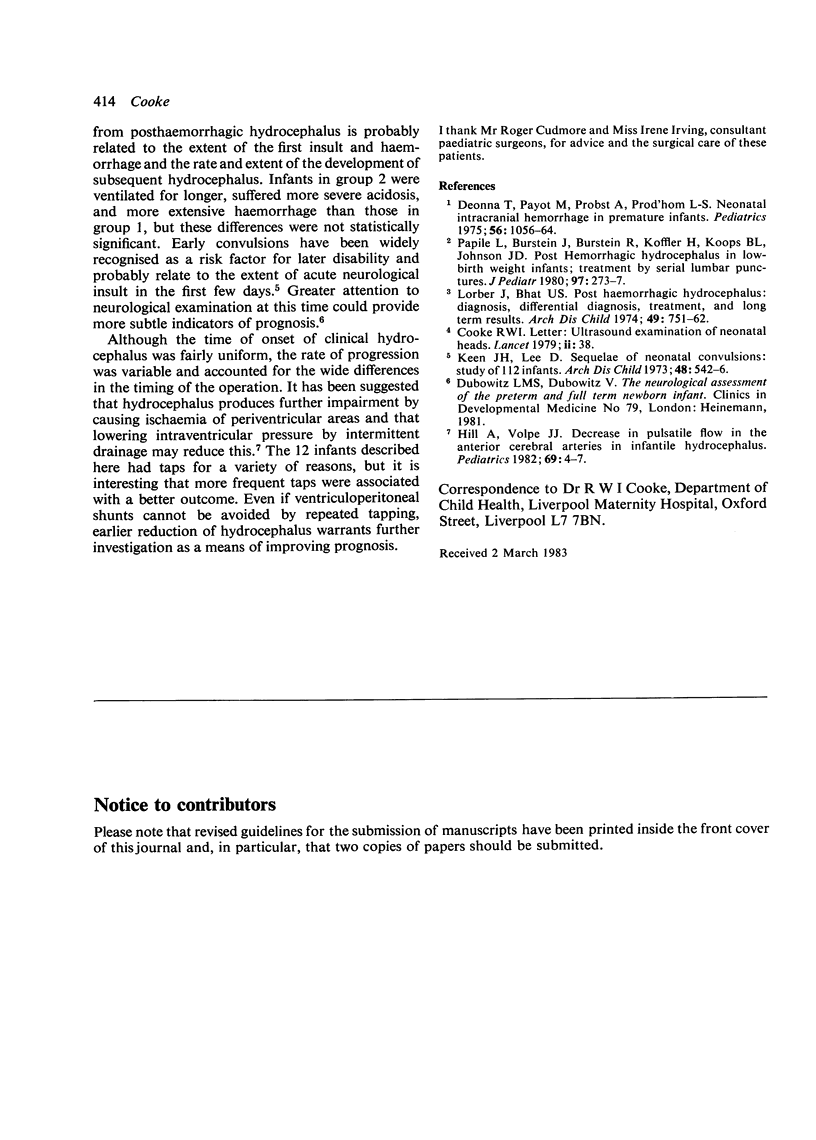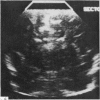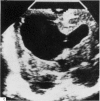Abstract
Twelve low birthweight preterm infants were treated for progressive posthaemorrhagic hydrocephalus by ventriculoperitoneal diversion of cerebrospinal fluid. At a median postnatal age of 20 months, 6 were moderately or severely retarded. Convulsions in the first week of life were associated with a poorer prognosis and frequent taps to remove cerebrospinal fluid with a better outcome.
Full text
PDF




Images in this article
Selected References
These references are in PubMed. This may not be the complete list of references from this article.
- Cooke R. W. Ultrasound examination of neonatal heads. Lancet. 1979 Jul 7;2(8132):38–38. [PubMed] [Google Scholar]
- Deonna T., Payot M., Probst A., Prod'hom L. S. Neonatal intracranial hemorrhage in premature infants. Pediatrics. 1975 Dec;56(6):1056–1064. [PubMed] [Google Scholar]
- Hill A., Volpe J. J. Decrease in pulsatile flow in the anterior cerebral arteries in infantile hydrocephalus. Pediatrics. 1982 Jan;69(1):4–7. [PubMed] [Google Scholar]
- Keen J. H., Lee D. Sequelae of neonatal convulsions. Study of 112 infants. Arch Dis Child. 1973 Jul;48(7):542–546. doi: 10.1136/adc.48.7.542. [DOI] [PMC free article] [PubMed] [Google Scholar]
- Lorber J., Bhat U. S. Posthaemorrhagic hydrocephalus. Diagnosis, differential diagnosis, treatment, and long-term results. Arch Dis Child. 1974 Oct;49(10):751–762. doi: 10.1136/adc.49.10.751. [DOI] [PMC free article] [PubMed] [Google Scholar]
- Papile L. A., Burstein J., Burstein R., Koffler H., Koops B. L., Johnson J. D. Posthemorrhagic hydrocephalus in low-birth-weight infants: treatment by serial lumbar punctures. J Pediatr. 1980 Aug;97(2):273–277. doi: 10.1016/s0022-3476(80)80494-x. [DOI] [PubMed] [Google Scholar]






